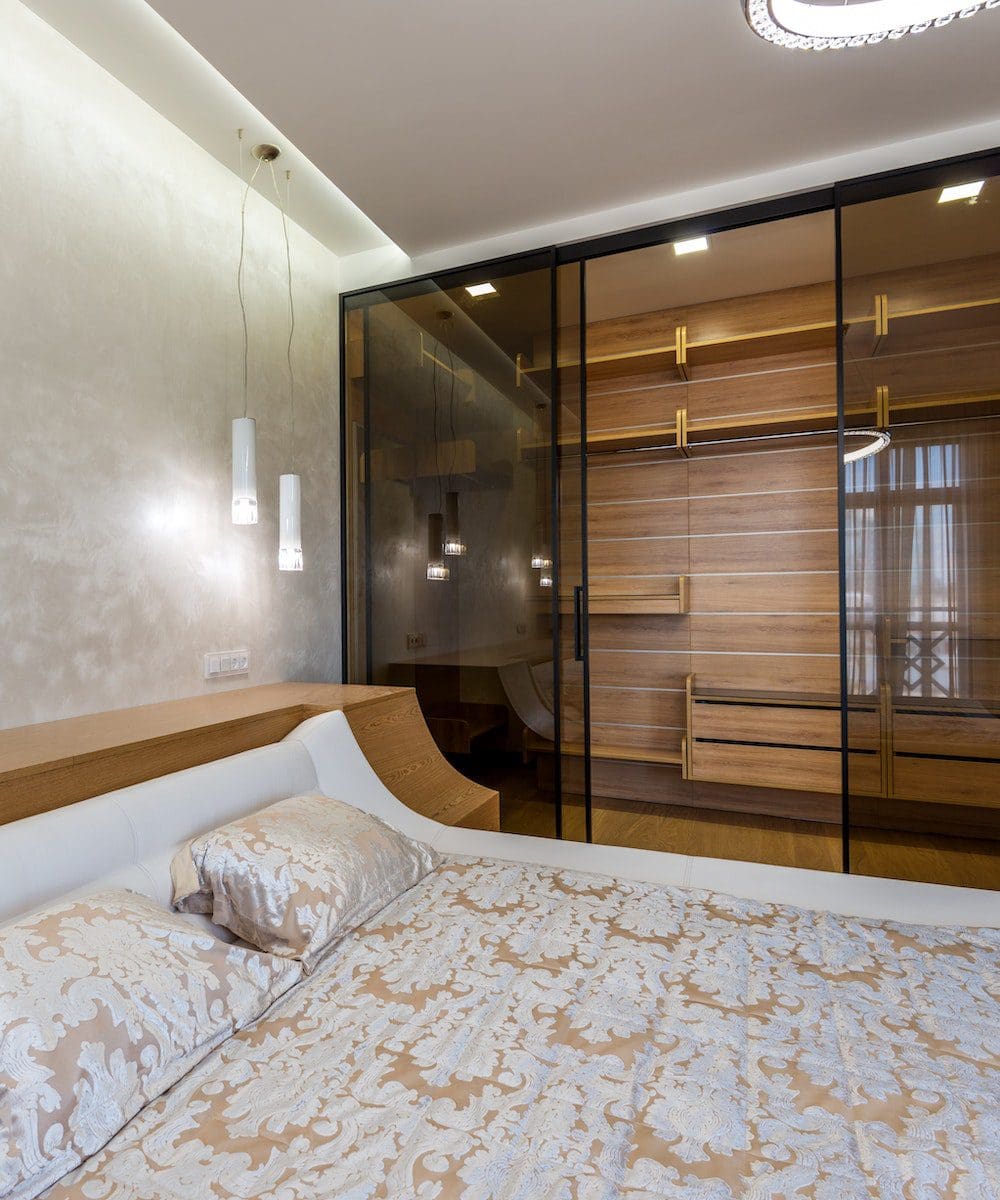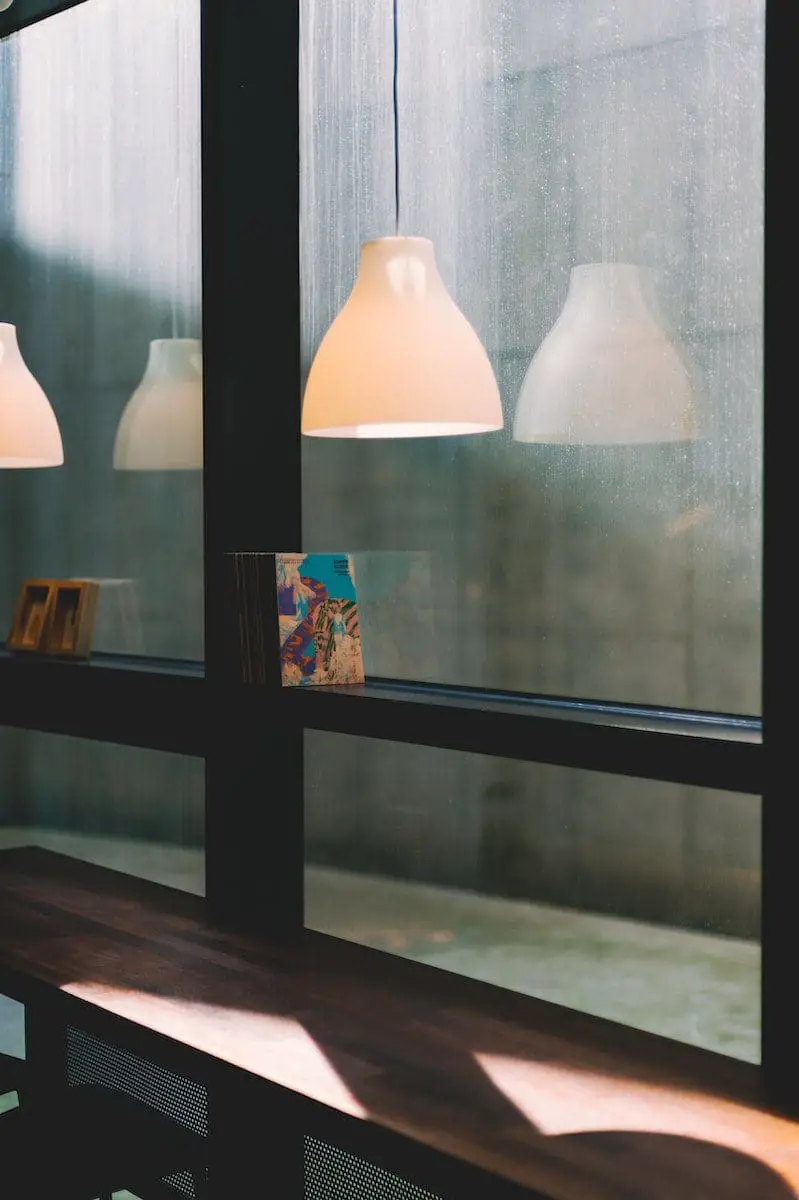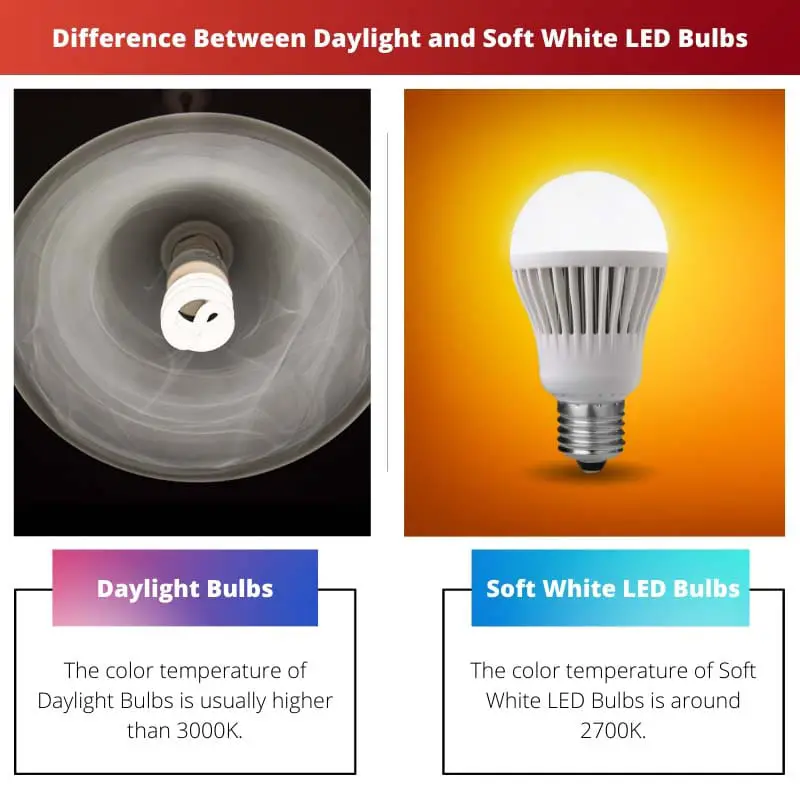Lighting these days have a variety of options to choose from. Different bulbs emit light of different colours and different colour temperatures. Colour temperature is essential.
This is because it defines the appearance of the light. Simply put, the temperature of colour might classify a light as soft, warm, cool or daylight.
Key Takeaways
- Daylight LED bulbs emit a cool, bright white light with a color temperature of around 5000K to 6500K, mimicking natural daylight, and are suitable for task lighting, garages, or workspaces.
- Soft white LED bulbs produce a warm, yellowish-white light with a color temperature of approximately 2700K to 3000K, creating a cozy, comfortable ambiance, ideal for living rooms, bedrooms, and dining areas.
- The choice between daylight and soft white LED bulbs depends on the desired lighting effect, atmosphere, and the specific room or application where the light will be used.
Daylight vs Soft White LED Bulbs
Daylight LED bulbs emit a bright, cool, bluish-white light similar to natural daylight. They are popular for task lighting and outdoor lighting, providing visibility and security. Soft white LED bulbs emit a warm, yellowish-white light, ideal for ambient lighting and decorative lighting.

Daylight bulbs emit a solid white light. Sometimes, these can be very harsh and are not suggested for home usage. These can also be used to change the appearance of a place.
When fitted with a daylight bulb, a dull-looking room can make it appear brighter and livelier.
Soft White LED bulbs, on the other hand, emit softer hues of lower colour temperatures. These types of lights can be used to make the place appear cosier. These lights are not as harsh as they emit yellowish shades.
Comparison Table
| Parameter of Comparison | Daylight Bulbs | Soft White LED Bulbs |
|---|---|---|
| Colour | Daylight bulbs have a bluish-white light. | Soft White LED bulbs have more yellow and red colours. |
| Colour Temperature | The colour temperature of Daylight Bulbs is higher than 3000K. Colour temperature in the 5000-6000K range is considered very white. | The colour temperature of Soft White LED Bulbs is around 2700K. |
| Ideal for | It is perfect for bathrooms, basements, and kitchens. | It is ideal for a living room, dining room, and bedroom. |
| Nature | It emits ambient colour light. | It emits warm and smooth light. |
| Comparison | The daylight bulb tends to copy the natural sunlight and provides warmth. | Soft White LED bulb tends to copy the old lamps giving a yellowish shade. |
What is Daylight LED Bulb?
Daylight bulbs are created to replicate the natural sunlight. Thus, they may appear harsh at times. Differentiation between different lights is made based on the colour temperature.
Daylight bulbs tend to have a higher colour temperature. This temperature is measured in Kelvins. Kelvin, to a layman, would be the blueness of a light. A Daylight Bulb tends to have a colour temperature of around 4600K to 6500K.
This is because the colour temperature of the sun is 5600K.
Daylight bulbs are beneficial in places like Kitchens as they emit sharp white light, and many essential tasks, such as chopping, etc., are done in the kitchen. The usage of Daylight bulbs enables us to see more clearly, thereby helping to avoid any injuries.
Daylight bulbs can also be used in bathrooms and basements. Basements tend to require brighter lights to see things. These lights are also ideal for recording videos as they highlight facial features.
There are both advantages and disadvantages to having a Daylight Bulb. Since the Daylight Bulbs are made to replicate the sunlight, one can see how their outfit and makeup would look in the natural light.
It also makes the room livelier. In addition to that, it also can play a role in helping with seasonal affective disorder. It is a type of depression concerning the change of seasons.
These bulbs are also economical. On the other hand, if not appropriately placed, they might make sleeping difficult at night since they are too white and might make your brain think it is still daytime.
These also tend to have a shorter life, and you might have to replace them quickly, thus cancelling the economic aspect.

What is Soft White LED Bulb?
Soft White LED bulbs were developed to replicate the glow of old incandescent lamps. These have a lower temperature than Daylight bulbs.
Their colour temperature is around the range of 2700K to 3000K. This is why they emit softer hues. Their colour is warmer and gives a feeling of cosiness.
Soft White LED bulbs tend to give out a reddish-yellow glow, unlike the harsh white light of Daylight Bulbs.
These bulbs are suited for places like bedrooms where lesser lighting is required. These also tend to have a soothing effect. But these have some disadvantages as well.
Soft White LED bulbs are initially costlier and sensitive to voltage fluctuations.

Main Differences Between Daylight and Soft White LED Bulbs
- Daylight Bulbs have a colour temperature of 5000K to 6000K. On the other hand, Soft White LED bulbs have a colour temperature of around 2700k to 3000k.
- Daylight bulbs emit bluish-white light. Soft White LED bulbs emit reddish-yellow light.
- Daylight bulbs are perfect for bathrooms, basements, recording videos, etc., whereas Soft White LED bulbs are more suitable for bedrooms, dining halls, etc.
- Daylight bulbs replicate the natural sunlight and, thus, can be harsh sometimes, whereas Soft White LED bulbs replicate the yellow shades of old lamps.
- Daylight bulbs emit bright and ambient colours, but Soft White LED bulbs emit soft and warm hues.




